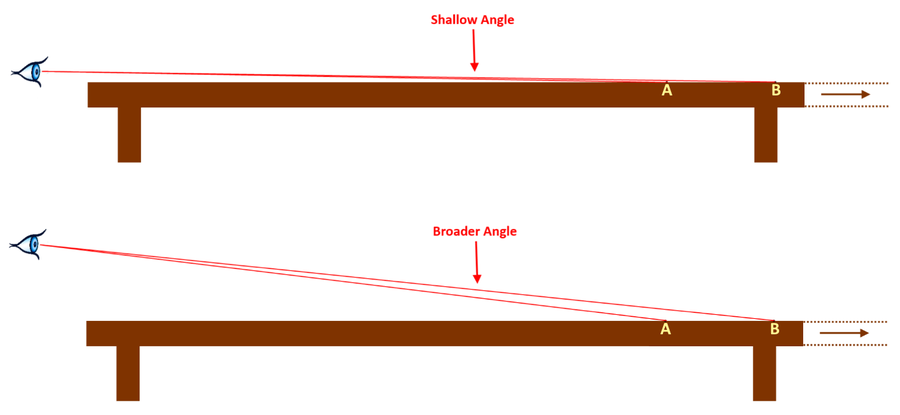Viewing Distance
It has been noted that although the earth is flat, distant continents thousands of miles away remain unseen. This is due to the fact that the atmosphere is not perfectly transparent. There is a limit to human sight before all lands are faded and obscured by the thickness of the atmosphere.
Atoms and molecules are not transparent and so distant objects will be faded with distance. For example, notice how these distant mountains tend to fade out and become discolored with distance. That's because the atmosphere is not perfectly transparent. When you look through the atmosphere you are looking through a fog of atoms and molecules. If the earth had no atmosphere those distant mountains would be as clear and sharp as the foreground.
Viewing distance into the horizon is directly correlated with pressure, gas constant, temperature, humidity, and pollution. At sea level the average air density is 1.2250 kg/m3. This sort of density will allow a viewing distance of around 25 miles across the horizon. In New York pollution and humidity are at such high levels that viewing distance is limited to 15 miles.
At higher altitudes the air density drops sharply, allowing the viewer to see far away lands before they are obscured by a blue-white sky. It is for this reason that an observer standing on Mt. Everest can see other mountains hundreds of miles away. Such pristine conditions are rare on the earth, however, only existing at high altitudes and in frigid environments.
Why can we see farther when we increase our altitude?
When you increase your altitude you are changing your perspective lines in relation to the earth, pushing back your vanishing point. The vanishing point, beyond which no man can see, is created when his perspective lines approach each other at a certain angle smaller than the eye can see (approx. 1/60th of a degree). If you increase your height you are changing your perspective lines and thus can see further before all sight is lost to the vanishing point.
Usually it is taught in art schools that the vanishing point is an infinite distance away from the observer, as so:
However, since man cannot perceive infinity due to human limitations, the perspective lines are modified and placed a finite distance away from the observer as so:
The vanishing point acts as the liming point of all vision, as all bodies beyond it are too small and squished into the surface to see with the naked eye.
The same effect is found on a 3D video game which assumes a flat surface. When you increase your altitude you can see farther because you are so much higher than everything else. Your computer's resolution is better able to see something below you than off on the horizon where the pixels are linearly squished.
When you increase your altitude on a plane you have broadened your perspective lines and have pushed your new vanishing point backwards into the distance.
Table Example
Imagine that we are looking at a very long table with our eye right against its surface. When we are low to the table the distant extent of the table builds up and the space in the distance is making a sharper angle to the eye. In the below image the eye is connected to points A and B, forming a flat scalene triangle.
Connecting the eye to point A and B at a lower elevation will make a very shallow angle, while connecting the eye to points A and B at a higher elevation will make a more broader angle to those points. If points A and B are 1/60th of a degree near the surface of the table, those points will appear to merge together. At a higher elevation points A and B may not be making 1/60th of a degree, and will not be merged together.
The view may be eventually impeded by the opacity of the atmolayer or other factors, but the matter shows how viewing distance can increase with altitude.
Why does the horizon create an obstacle for shipborne radar?
Ships utilising conventional radar can't detect other ships that are beyond the horizon (as seen from the transducer). This is because the power of the radar's return signal diminishes by a power of four in relation to the radar's output. Higher frequency waves (not higher powered) are prone to more "scatter" due to moisture in the air. A higher the transmitter and receiver are located, the less of the atmospheric gradient they are passing through and hence they can "see" farther" before the scatter reduces the power to irretrievable levels. A higher frequency radar beam will naturally diminish faster than a low one as well. In fact, a low frequency beam will travel much farther than the "curvature" of the earth would allow in RET.



